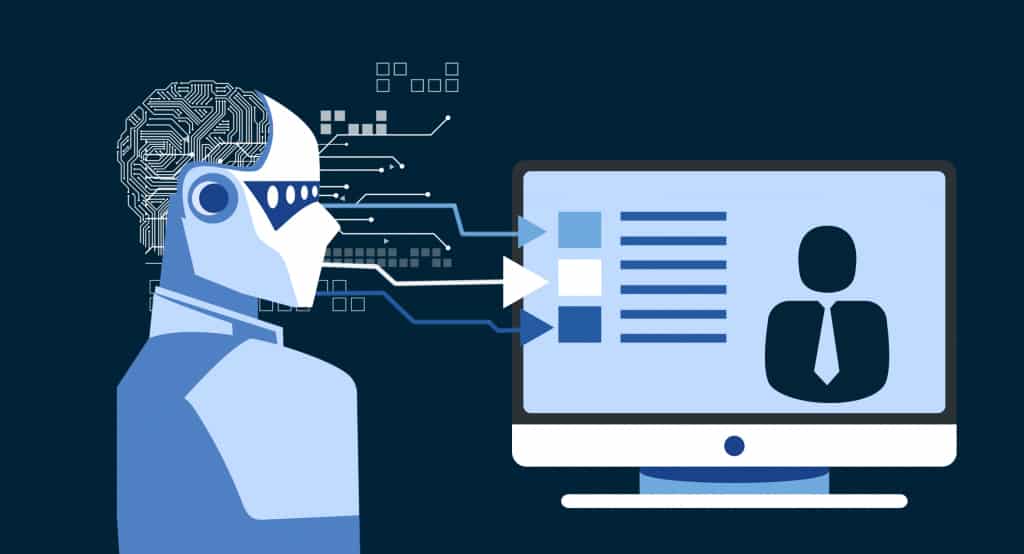
Eliminating HR and Recruitment Bias with AI
Some of the biggest challenges in the field of recruitment stem from HR (Human Resources) bias, which impact the crucial aspects of diversity, inclusiveness and equality in the world of work. These issues can be hard to resolve since a lot of times certain prejudices or biases are so deep-seated and normalized, that one doesn’t even realize they are being biased. With a judicious use of AI in recruitment and HR, we can hope to create and sustain a more equal and diverse work space. And here is how.
-
Using AI to root out bias during recruitment
This by far is one of the best uses of AI. While AI learns the patterns of recruitment by analyzing the past history, it is possible to mould the algorithms in a way so that while playing the necessary filters of finding probable candidates, it doesn’t stick to the past biases in recruitment. In this case, the result is having a much greater chance at a diverse work force, and at a fair recruitment process which keeps in mind only the necessary qualifications which defines the successful candidate. Thus, keeping at bay any and all biases related to gender, caste, class, religion, et al.
-
Using AI to identify gender biased job descriptions
Here is something Amanda Bell, Director of Recruiting at Lever, has to say about Gender biased job descriptions:
“Luckily, this can be pretty easy. Review your job descriptions with the lens of “Who is the audience here?” If your answer is “any qualified candidate, regardless of gender,” you’ve done a good job! It’s not just about the presence of gender-specific pronouns – it’s also about using language that is inclusive of all genders. Stay away from phrases like “kick ass,” “ninja,” and, believe it or not, “brah.” You can also ask a few employees of various genders to read the descriptions and solicit feedback.”
In fact, this problem is deeper and more pervasive than we think. Even seemingly harmless words have an impact on how gender inclusive the descriptions are. With the help of AI, we can move a step closer to creating gender inclusive job descriptions. This is often the very first step of recruitment. And getting the beginning right, helps ensure the standards of fairness all through the process.
-
Using AI to see the “invisible bias”
While bias in recruitment, and the way job descriptions are crafted can be identified to a certain extent, there are multiple other forms of biases which aren’t visible. These are often the more insidious ones. And are also often the mound of biases leading up to the formation of the glass ceiling.
Turns out, it is very much possible to sniff these biases out with the help of AI. For example, Joonko, a new application powered by AI, acts as a diversity coach. Based on experiential learning of CEO and Co-founder of the product, Ilit Raz, she designed it after becoming aware of the several forms of unconscious biases she as a woman faced in her everyday work life. In contrast to the available AI tools which mostly look at recruitment biases, this tool aims at illuminating unconscious bias in workplace situations where very few people even think or feel it exists. “We try to catch these ‘micro-events and point them out to managers and workers immediately.”, says the co-founder on what the product aims at.
This is a beautiful way of blending technology and human understanding to create a truly inclusive and fair workplace.
-
Using AI to eliminate biases from Performance Management Systems
It is no secret that performance assessments are often shrouded by conscious and unconscious biases of the individual entrusted with the task. An unfair assessment of an individual’s contribution to the organization definitely impacts the overall work space environment, making it a less happy place for people to thrive and work in. A way of dealing with these biases is by using AI in performance management systems. It can take care of two main things that are often said to influence a manager’s decision making with respect to performance assessment:
– Regency Effect: i.e., when a manager bases the performance of an individual on a recent event, rather than looking at his/her performance over a period of time, cumulatively.
– Contrast Effect: i.e., when a manager compares or contrasts an individual’s performance against someone else’s, instead of comparing it to the pre-set standards for the given task role.
While the role of humans in the world of work can never be completely over taken by AI, there are things that AI can help humans do better. With the right balance, and insights, AI powered technology can help us move towards fairer, equal, diverse and happy work spaces.




